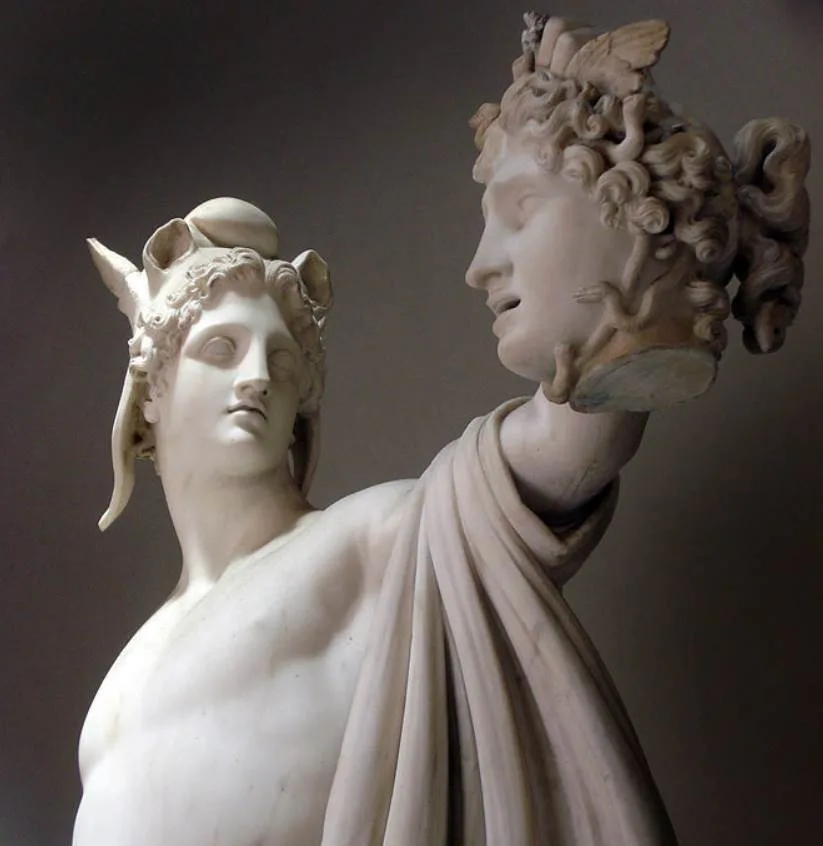When an ancient sculpture was discovered in Rome in the early 16th century, the new Pope decided to buy it and put it on public display.
The year was 1506 and Pope Julius II hired some of the most famous artists in history to produce art for his collection.
He also acquired many sculptures and paintings, including an ancient work that formed the foundation of the sculpture collection at the Vatican Museums.
Together with an incredible collection of paintings and other artifacts, the museums hold one of the most impressive collections of art in the world. It comprises over 70,000 artworks of which over 20,000 are on display.
The Sistine Chapel is an integral part of the museums and houses the world-famous Creation of Adam by Michelangelo.
In this article, you’ll discover some of the most famous sculptures at the Vatican Museums. These are located in the 4 different sculpture departments of the museums.
1. Laocoön and His Sons
- Date created: 200 B.C. – 70 A.D.
- Dimensions: 208 x 163 × 112 centimeters (6 feet 10 inches × 5 feet 4 iches × 3 feet 8 inches)
- Location: Museo Pio-Clementino
Laocoön and His Sons is an ancient sculpture that forms the foundation of the sculpture collection of the Vatican Museums. It was discovered in a vineyard near the basilica of Santa Maria Maggiore in Rome and purchased by Pope Julius II in 1506. It depicts Trojan priest Laocoön and his sons Antiphantes and Thymbraeus who are being attacked by vicious serpents.
The sculpture was identified as being carved by Greek sculptors by Pliny, the ancient historian, but he didn’t give much detail. It was certainly modified in ancient times and is believed to date back to the Julio-Claudian Dynasty (27 B.C. – 68 A.D.) which comprises the first 5 Roman Emperors.
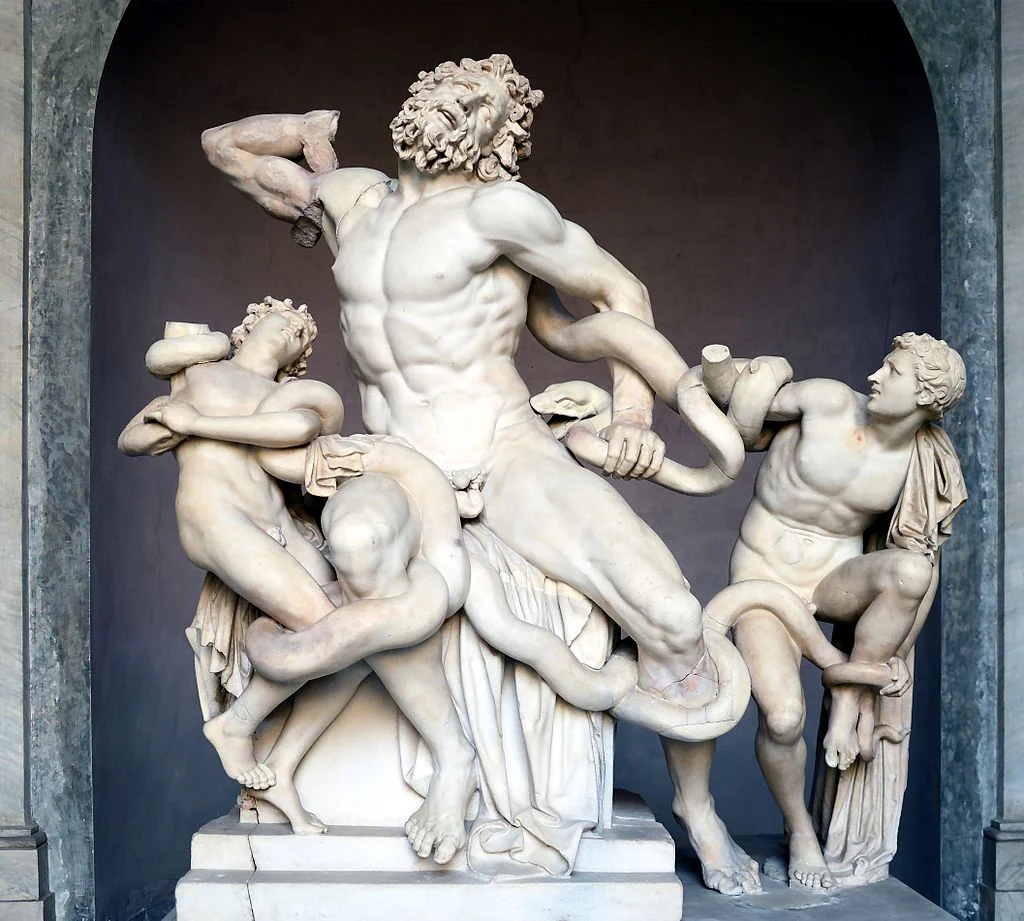
2. Apollo Belvedere
- Date created: 120-140 A.D.
- Dimensions: 224 centimeters (88 inches)
- Location: Museo Pio-Clementino
The Apollo Belvedere is another ancient sculpture that was discovered during the Renaissance. It’s believed to have been carved during the reign of Roman Emperor Hadrian, a man who was obsessed with Greek culture. This might explain why it features such distinctive Hellenistic elements.

Art historians are pretty sure it’s an original sculpture as well. That’s because the Greek god Apollo was depicted wearing typical Roman sandals. The sculpture has been a part of the collection of the Vatican Museums since 1511 and remains one of its greatest attractions today.
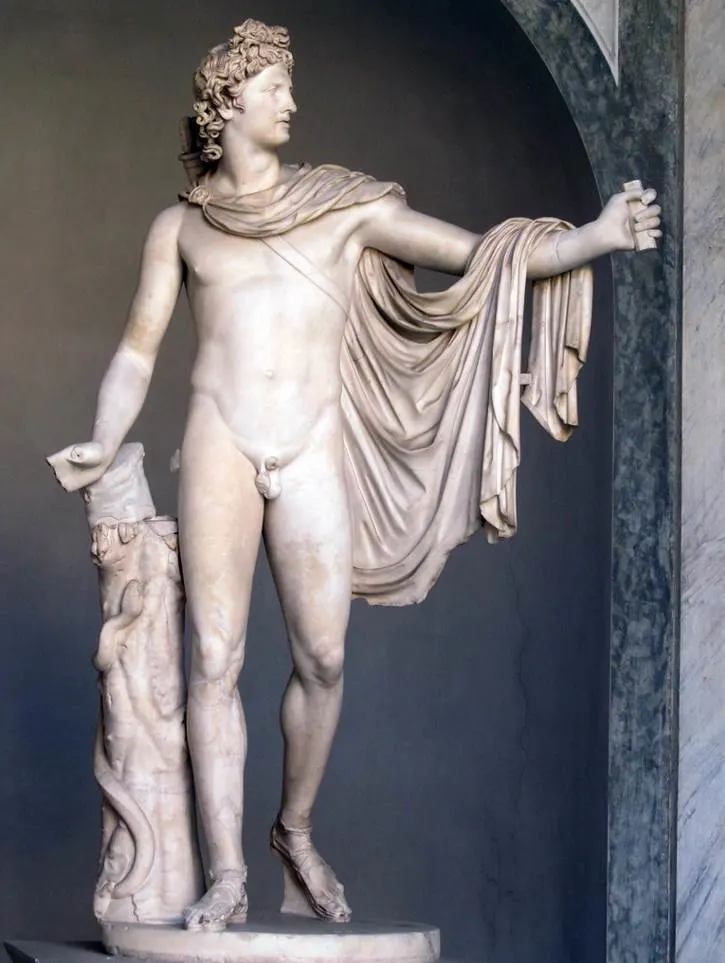
3. Augustus of Prima Porta
- Date created: 1st century A.D.
- Dimensions: 208 centimeters (6 feet 10 inches)
- Location: Museo Chiaramonti (Braccio Nuovo / New Wing)
Augustus of Prima Porta is a life-sized sculpture of the Roman Emperor Augustus (63 B.C. – 14 A.D.), the man who transformed the Roman Republic into a dictatorship. The sculpture is named after the location it was found, Prima Porta, a district in central Rome.
This immense sculpture weighs over 1,000 kilograms (2,200 lbs) and was excavated in 1863 inside the former villa of Augustus and his third wife Livia Drusilla. Because of this, it’s assumed it’s a copy of an original bronze that has been lost. It was painted in vivid colors in ancient times and replicas give us a remarkable view of how Augustus looked in his younger years.
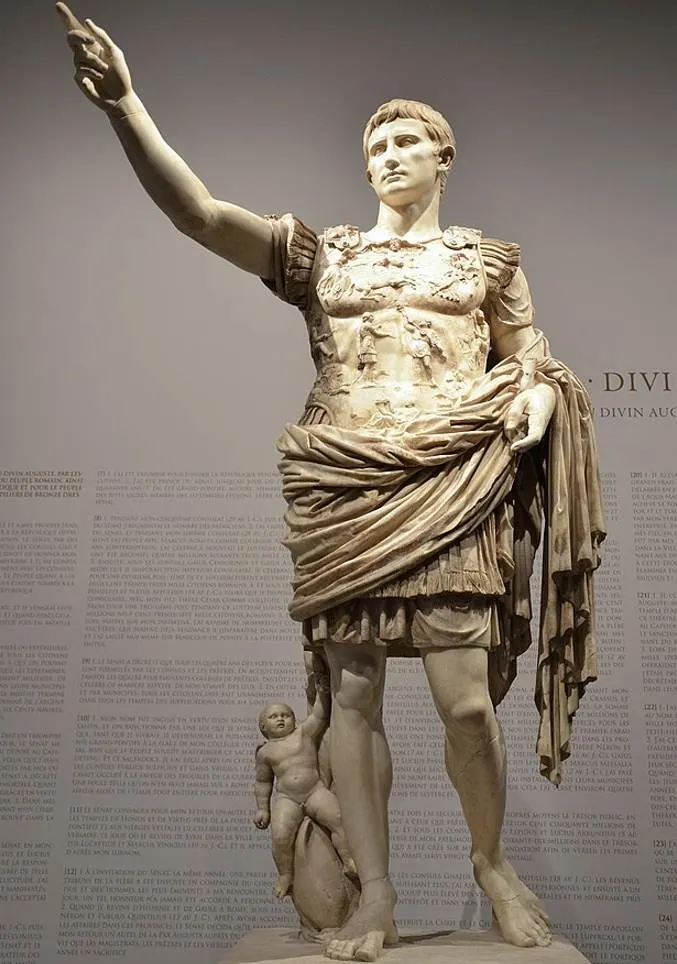
4. Mars of Todi
- Date created: Late 5th-Early 4th centuries B.C.
- Dimensions: Near life-sized
- Location: Museo Gregoriano Etrusco
The Mars of Todi is a bronze Etruscan sculpture that was completed in Etruria, a historic region in Central Italy. It’s likely that this bronze sculpture of a warrior was completed to serve as a votive offering for Laran, the Etruscan god of war.
The typical Etruscan sculpture integrates several elements of Hellenistic art, including the contrapposto posture. This means that the weight of the depicted man rests on one foot. The most notable feature is the lamellar plate armor which provides great insights into the battle gear used at this time in history.
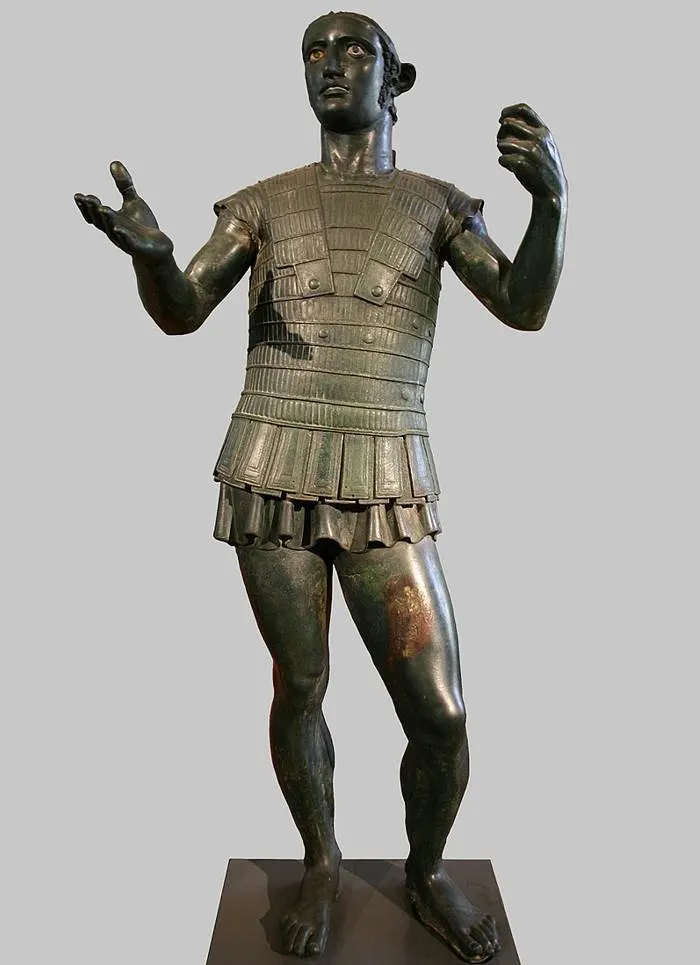
5. Statue of the Nile
- Date created: 2nd-3rd centuries A.D.
- Location: Museo Chiaramonti (Braccio Nuovo / New Wing)
The Statue of the Nile is a monumental sculpture that represents Nius, the Greek god of the Nile. It was probably carved in ancient Greece and is believed to be a copy of an original work that once decorated the streets of the ancient Egyptian port city of Alexandria.
The god can be seen lying on top of a sphinx while multiple children crawl on top of his body. Another version of this sculpture of lower quality is located at the Piazzetta Nilo in Naples, a square that was named in its honor.
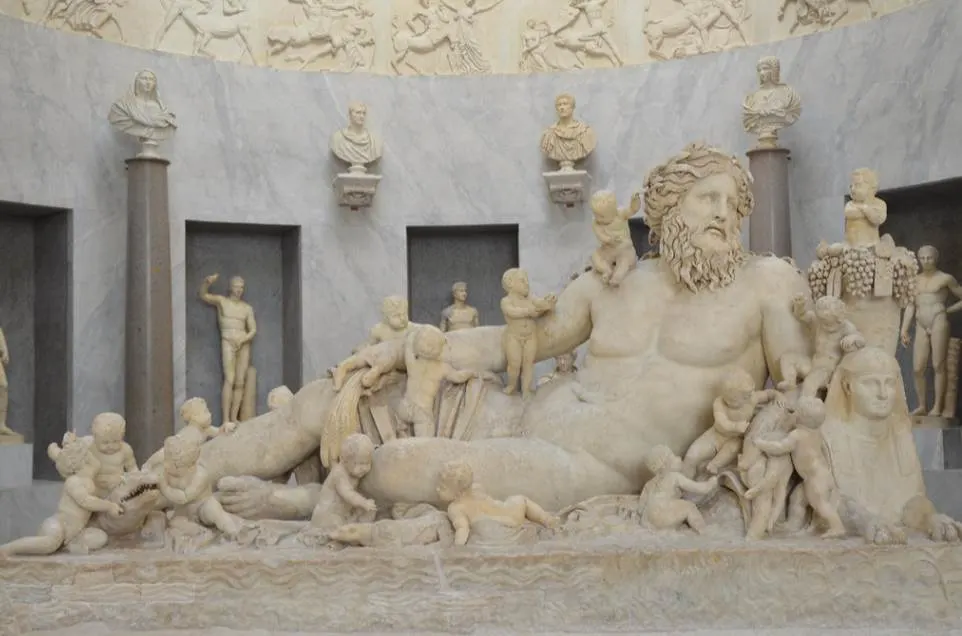
6. Braschi Antinous
- Date created: 138 A.D.
- Dimensions: 330 centimeters (10.82 feet)
- Location: Museo Pio-Clementino (Sala Rotunda)
The Braschi Antinous is an enormous sculpture of Antinous, the lover of Roman Emperor Hadrian. He is depicted as a mix between the gods Dionysus and Osiris. The man drowned in the Nile in the year 130 A.D. and the sculpture was commissioned shortly after this tragic event.
The sculpture was rediscovered during excavations at Hadrian’s Villa at Palestrina in Tivoli. It was restored and put on display at the Palazzo Braschi in Rome where it remained until 1844. Today, it’s one of the most remarkable sculptures at the Museo Pio-Clementino of the Vatican Museums.
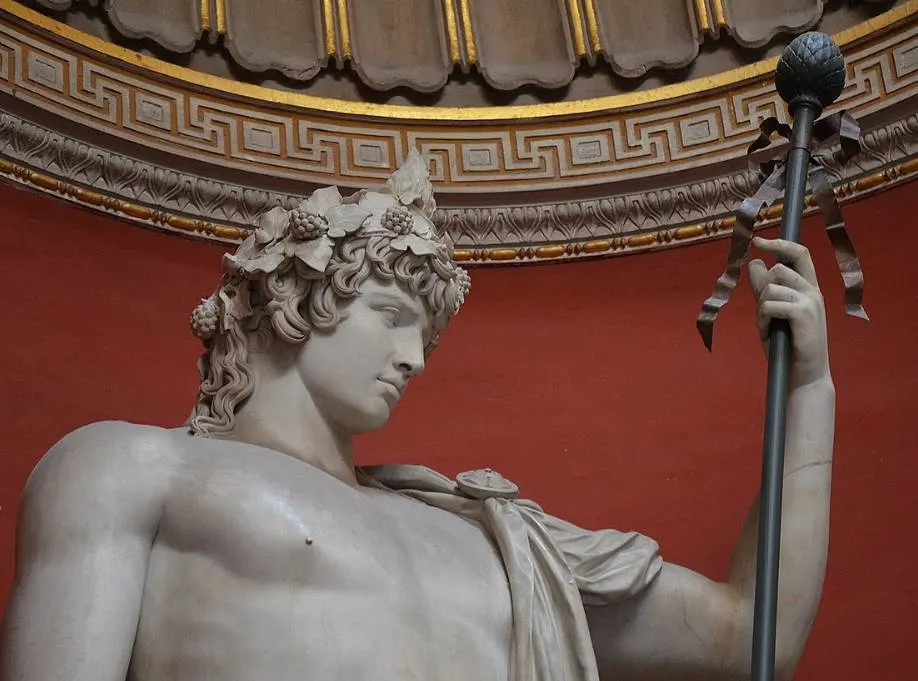
7. Belvedere Torso
- Date created: 1st-century B.C.-A.D.
- Dimensions: 1.59 meters (5.2 feet)
- Location: Museo Pio-Clementino (Sala delle Muse)
The Belvedere Torso is a fragmented sculpture of a nude man which is believed to have been carved in either the 1st century B.C. or the 1st century A.D. It’s probably a copy of an even older sculpture that was completed in the 2nd century B.C.
The base of the sculpture was signed with the words “Apollonios, son of Nestor, Athenian.” Unfortunately, this doesn’t make us much wiser but there is no trace of this man in any other ancient sources. Michelangelo (1475-1564) probably used this torso for one of the figures in his monumental “The Last Judgement” at the Sistine Chapel (the figure holding the artist’s own flayed skin).
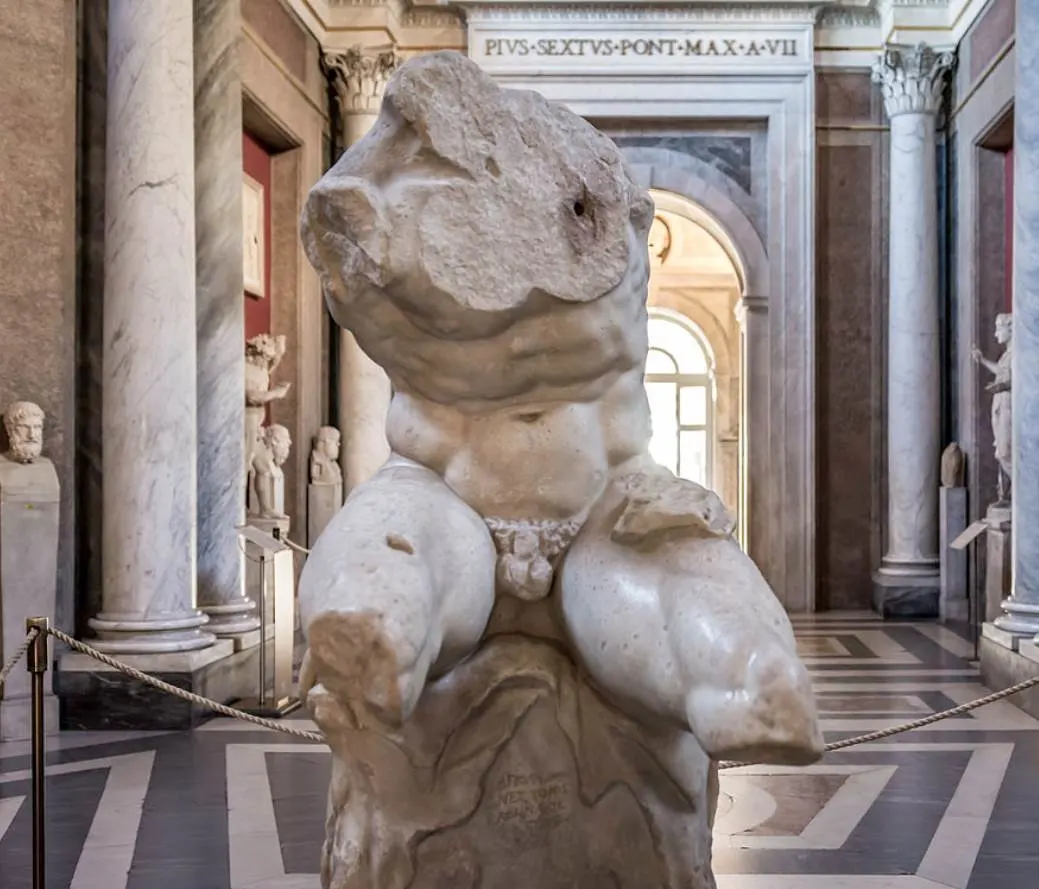
8. Sleeping Ariadne
- Date created: 2nd century A.D.
- Dimensions: 2.26 x 1.29 x 1.03 meters (88.97 x 50.78 x 40.55 inches)
- Location: Museo Pio-Clementino (Gallery of the Statues)
The Sleeping Ariadne is one of the most famous ancient sculptures in the world. It dates back to the reign of the Roman Emperor Hadrian (who else) in the 2nd century A.D. and is believed to be a copy of a Hellenistic sculpture carved by the Pergamene school of the 2nd century B.C.
The reclining figure is depicted in a half-sitting, half-lying position. Her head rests on her left hand and her right arm rests on her head. The sculpture was long believed to depict the Ancient Egyptian Queen Cleopatra because she is wearing a snake bracelet.

9. Mastai Hercules
- Date created: End of the 1st – Beginning of the 3rd centuries A.D.
- Dimensions: 383 centimeters (150.78 inches)
- Location: Museo Pio-Clementino (Sala Rotonda)
The Statue of Hercules, also known as “Heracles” or the “Mastai Hercules,” is a huge gilded bronze sculpture of the ancient god who was known for his strength. The son of Jupiter is depicted fully naked and leaning on his huge club.
The sculpture was discovered in 1864 beneath the courtyard of the Palazzo Pio Righetti which is located in the vicinity of the ancient Theater of Pompeii in Rome. The sculpture was damaged as it was hit by lightning. According to Roman tradition, it was given a proper burial together with the remains of a dead lamb.
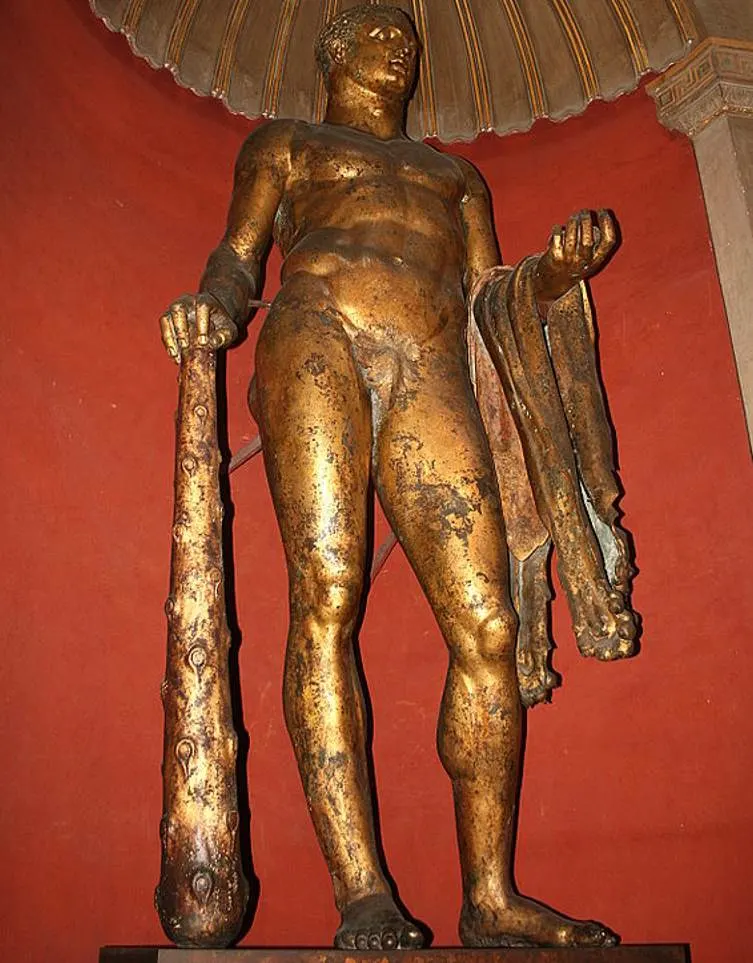
10. Perseus Triumphant
- Date created: 1800-1801
- Dimensions: 242.6 x 191.8 x 102.9 centimeters (95.5 x 75.5 x 40.5 inches)
- Location: Museo Pio-Clementino
Perseus Triumphant is a sculpture that depicts the legendary founder of Mycenae according to Greek mythology who is holding the severed head of Medusa. She was one of the three gorgons who had snakes in her hair.
The sculpture by Antonio Canova was carved in just a few months in the first years of the 19th century, a period when the Neoclassical artist was already the most sought-after artist in Europe. It was commissioned by the French tribune Onorato Duveyriez and later purchased by Pope Pius VII Chiaramonti.
